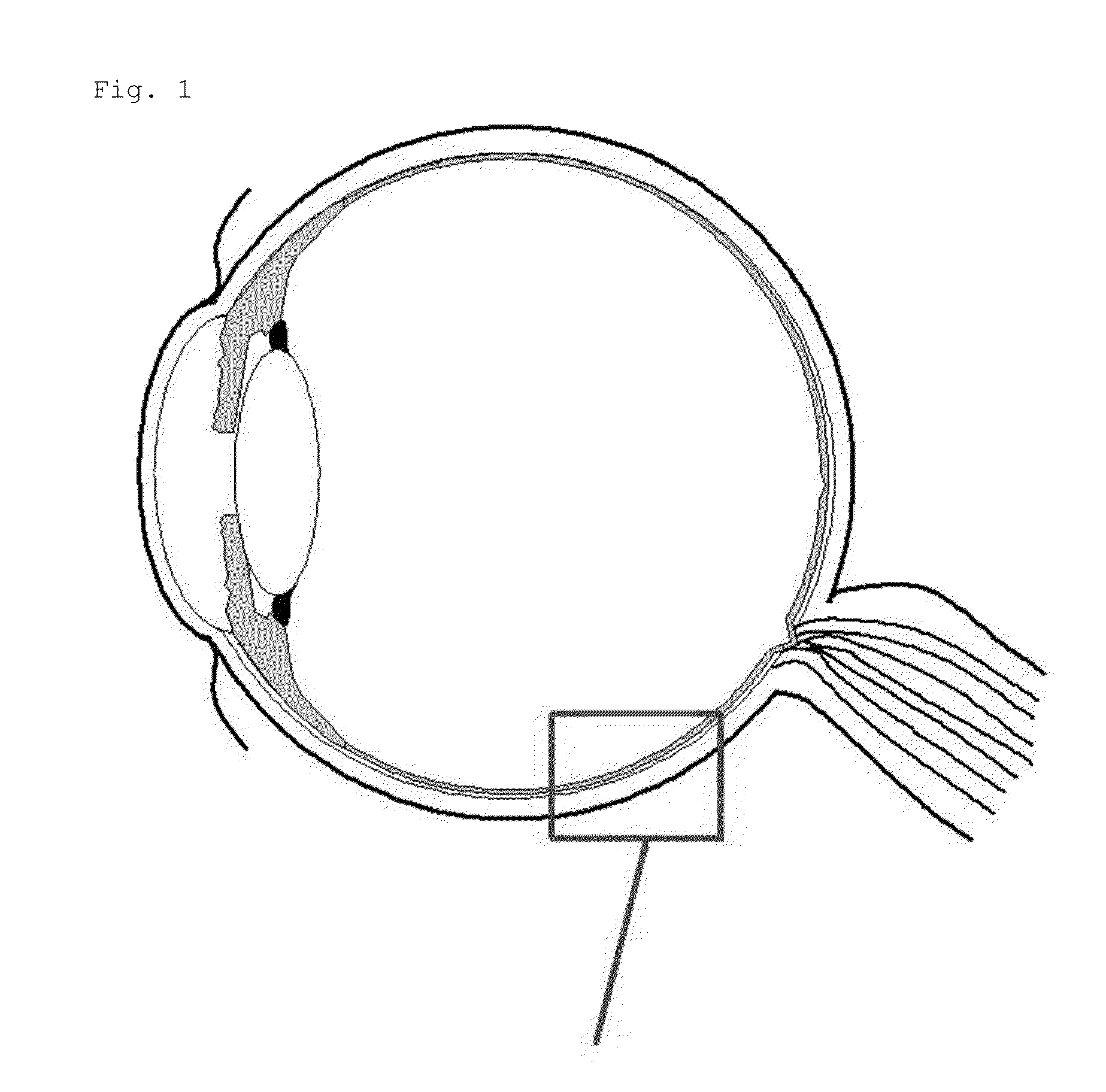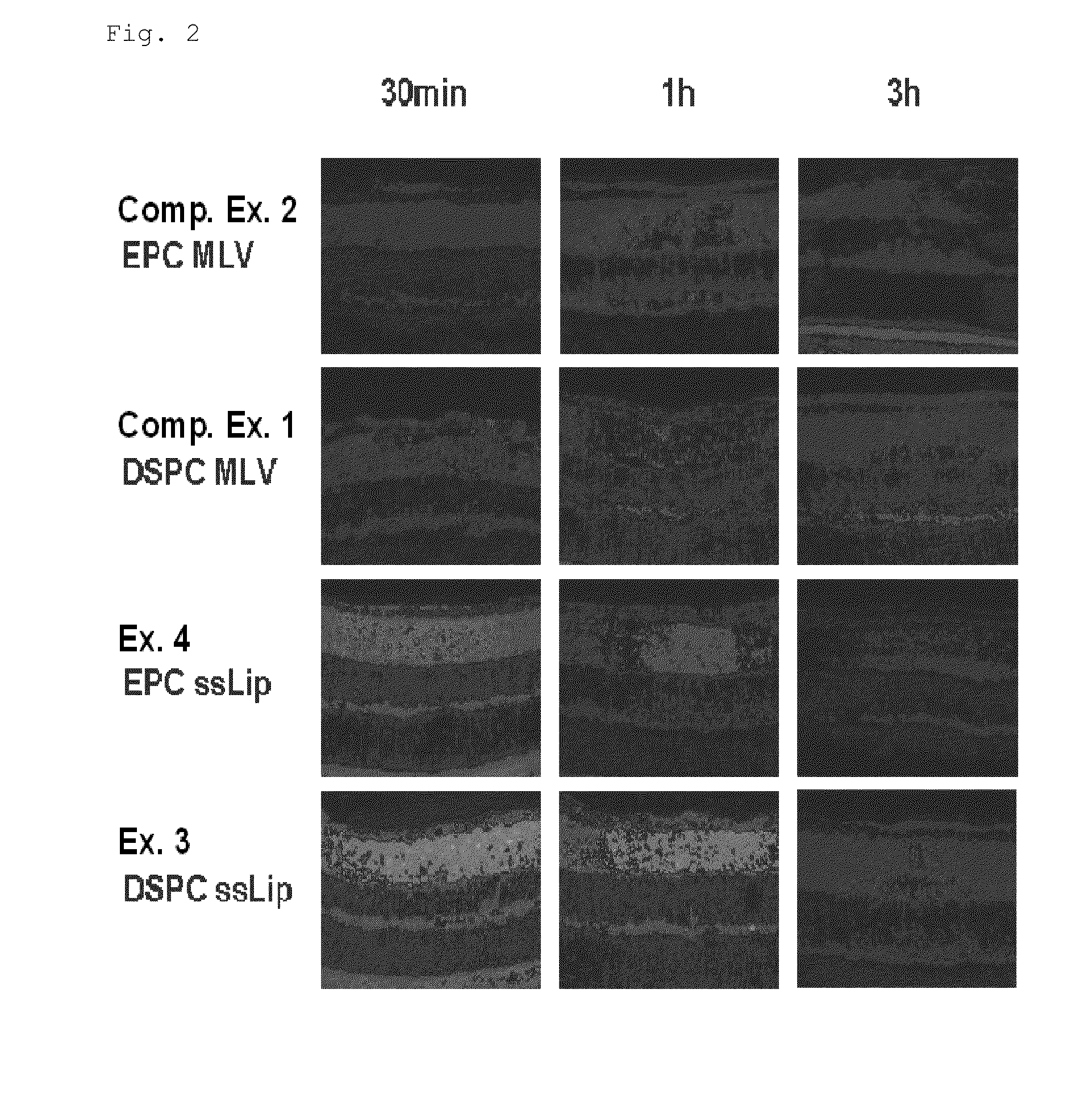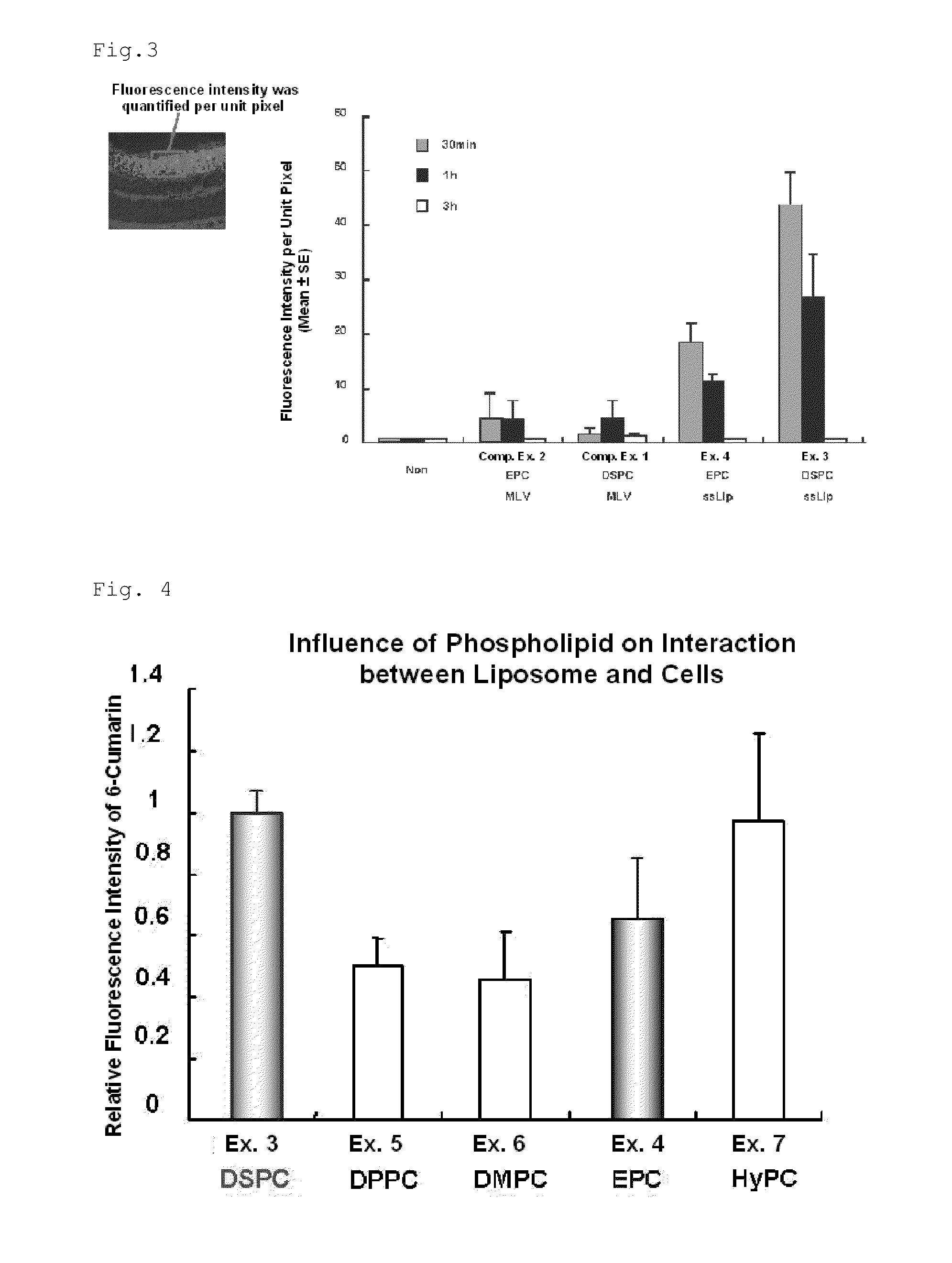Liposome for delivery to posterior segment of eye and pharmaceutical composition for disease in posterior segment of eye
a technology of liposomes and pharmaceutical compositions, applied in the direction of drug compositions, pharmaceutical active ingredients, medical preparations, etc., can solve the problems of low drug permeability into corneal and conjunctival epithelial cells, short drug residence time, and lack of ease of administration, and achieve the effect of non-cytotoxi
- Summary
- Abstract
- Description
- Claims
- Application Information
AI Technical Summary
Benefits of technology
Problems solved by technology
Method used
Image
Examples
examples 1 and 2
[0136]Liposome components of each of the compositions shown in Table 1 were subjected to a rotary evaporator at about 40° C. under reduced pressure, forming a thin film on the inner side of the evaporator. The thin film was subsequently hydrated with HEPES-HBSS solution or the like in a water bath of about 60° C. to 70° C., thereby preparing MLVs. The MLVs were subjected to extrusion, producing a solution containing ssLip (Examples 1 and 2). In the invention, the membrane filter used for extrusion in the Examples was a Nuclepore track-etched polycarbonate membrane, manufactured by Whatman (Schleicher & Schuell).
[0137]The rigidity (H / P) of each of the liposomes was measured according to the method described above.
[0138](Preparation of AP-Treated Mica)
[0139]Prior to the measurement of rigidity, mica used as the substrate was pre-treated according to the method described in Thomson, 2000, Langmuir 16(11), 4813-4818.
[0140]Specifically, the pre-treatment of mica was performed as follows....
examples 8 to 11
[0182]Following the method described in the Examples above and the like, liposomes having a molar ratio of DSPC / DCP / Chol.=8 / 2 / 1=1 / 0.25 / 0.125 were prepared. In the purification process of these liposomes, the pore size of the membrane filter used for extrusion was varied, thereby producing solutions containing liposomes having mean particle diameters of 116.8 nm (Example 8), 174.8 nm (Example 9), 300.6 nm (Example 10), and 561.0 nm (Example 11). The solutions containing these liposomes all had a liposome concentration (a phospholipid concentration) of 20.4 mM.
[0183]The test (I) for investigating delivery to the posterior segment of the eye was conducted on these liposome solutions. According to the results, all of the liposome solutions migrated to the posterior segment of the eye. However, the amount of each liposome solution delivered tended to depend on the mean particle diameter of the liposome (FIGS. 8 to 11).
[0184]That is to say, these results indicate that the ability of the l...
example 12
[0185]Following the methods described in the above examples and the like, a solution containing a liposome having a compositional ratio (a molar ratio) of EPC / SA / Chol.=7 / 1 / 3≈1 / 0.14 / 0.43, and having an H / P=0.15 (H=15.3±1.17, P=103.6±0.85), was prepared.
[0186]The test (I) for investigating delivery to the posterior segment of the eye was conducted on this liposome. As a result, the delivery of the liposome to the posterior segment of the eye was confirmed (FIG. 12).
PUM
 Login to View More
Login to View More Abstract
Description
Claims
Application Information
 Login to View More
Login to View More - R&D
- Intellectual Property
- Life Sciences
- Materials
- Tech Scout
- Unparalleled Data Quality
- Higher Quality Content
- 60% Fewer Hallucinations
Browse by: Latest US Patents, China's latest patents, Technical Efficacy Thesaurus, Application Domain, Technology Topic, Popular Technical Reports.
© 2025 PatSnap. All rights reserved.Legal|Privacy policy|Modern Slavery Act Transparency Statement|Sitemap|About US| Contact US: help@patsnap.com



